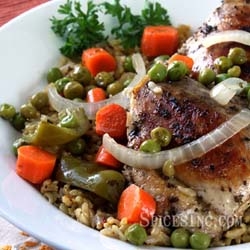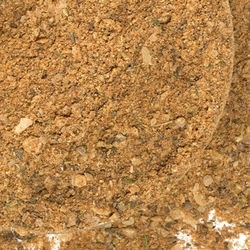Brazilian Cuisine 101

Brazilian Cuisine 101
Brazil is a country with wonderful people, traditions, beaches and--most importantly--food! Brazil has hosted the World Cup and the Olympics, and nearly 2 million people visit the annual festival, Carnival, in Rio de Janiero. There are 6.5 million tourists crossing the border to Brazil every year, soaking up the sun, the beaches, and the local cuisine. We figured we'd offer up some basic background on Brazil and their food so you can impress your friends over a plate of feijoada (fey-zhoo-ah-dah), the national dish.
In April 1500, Brazil was claimed by Portugal on the arrival of the Portuguese fleet commanded by Pedro Álvares Cabral. At the time, the land's major export was a tree the traders and colonists called pau-brasil or brazilwood. Pau-brasil translates as "wood that's red like an ember", so named because the red heartwood polishes to a bright-red shine, and it's this tree that gave the country its name. Brazil is the largest country in South America and is the fourth-largest country in the world. Because of its size the cuisine is difficult to lump under one umbrella and varies from region to region, much like the regions of the United States. The culture is a blend of native Amerindian, African, Portuguese, Italian, Spanish, German, Polish, Syrian, Japanese, Lebanese and plenty of others. Much like Northern Africa, its history displays a strong multicultural influence.
Table of Contents
Salvador, Sao Paulo and Rio de Janero
Curitiba and Porto Alegre (Southern Brazil)
Cuiaba, Brasilia and Belo Horizonte (Central Brazil)
The National Dish
While each region has its own particular style and flair, feijoada is recognized as the national dish. Named for feijão, or "beans" in Portuguese, Feijoada is a stew made with black turtle beans and various cuts of pork and beef. It's often served with rice and collard greens or deep-fried cassava or bananas. It can also be served with an orange salad. It's a common meal on Wednesday or Saturday lunch in the Southeast cities of Rio de Janeiro, São Paulo and Minas Gerais.
Brazilian meals often consist of rice, beans and pork or beef, rounded out by fresh bread in local shops and markets, including pão de queijo, which is a delicious cheesy roll. Many fresh pastries are eaten for breakfast along with fresh fruits such as mango, papaya, guava, passion fruit and oranges. These fruits are also juiced and enjoyed fresh at either breakfast or brunch.
Salvador, Sao Paulo and Rio de Janero
Some cities that are considered Brazil's tourism capitols are Salvador, Sao Paulo and Rio de Janero. These metropolitan centers on the Eastern coast of Brazil have some advantages when it comes to fresh seafood, since they are coastal and have ready access to fishing boats. They are also located in and around the prime cattle ranching areas for which Brazil is famous, so restaurants and stores in this region have an advantage in supplying themselves with red meat.
In many of these cities, street foods can be found, including the beloved pastels. Considered fast food by Brazilians, pastels are hand pies filled with ground beef, chicken or shrimp, mozzarella and heart of palm. They can also be filled with sweet treats, like guava, banana, or chocolate. They are then deep fried in vegetable oil to crispy perfection and then eaten like a sandwich.
Curitiba and Porto Alegre (Southern Brazil)
The Southern region of Brazil has a distinct European flavor and long tradition of livestock production. Meat is a major staple of Southern Brazilian cuisine, and it is primarily seasoned simply with salt to bring out the nuances in the flavor. Pizza is a surprisingly popular food found in the South thanks to Italian influence. A Brazilian pizza is very different from a typical American pizza; it is made in a wood-fire oven with a thin, flexible crust and little or very little sauce. The toppings reflect the taste preferences of the country; they use guava, Minas cheese, banana and cinnamon, poultry and mild, spreadable catupiry cheese. In some regions they prefer to top their pizza with olive oil, but you'll also find people who prefer ketchup, mustard and even mayonnaise!
Cuiaba, Brasilia and Belo Horizonte (Central Brazil)
Until the 1950s, central Brazil, especially the Western states, was isolated from outside influences. This changed drastically when Brasilia was built as the new capitol. With this change, many people migrated to the central region and their cuisine became more recognized.
Because of the isolation, this region took from the land to find their staple foods. This area of the country contains the Pantanal, one of the world's largest wetland areas. This is one of the best fishing and game regions in the world. As you probably could guess, fish is a large part of the daily diet in this area. Carne seca, dried meat like beef jerky, and plaintains are other food staples in this area of the country.
Fortaleza, Natal and Recife (Northeastern Brazil)
The Northeast region of Brazil is known for its coastal areas from Pernambuco to Bahia and is heavily influenced by African cuisine. Bahia is known for its acarajé which is peeled black-eyed peas that are formed into a ball and then deep-fried in palm oil or dendê. It's a typical street food found not only in Bahia, but also the markets of Rio de Janeiro and other larger cities. The other thing Bahia is known for is the spice blend Tempero Baiano which translates literally as Bahian seasoning. Tempero Baiano varies, like any beloved regional spice blend, from town to town and family to family, since each place has their own preferences. Usually they all contain oregano, one or more kinds of pepper, and parsley, but this can vary greatly. It is typically used to season fish, veggies, and soups.
Manaus (The Rainforest)
The Northern region is distinctly indigenous in their cuisine. Their most popular dish is Pato no tucupi (duck in tucupi) which is served during the Roman Catholic celebration Círio de Nazaré. Tucupi is a yellow sauce extracted from wild manioc root and is extremely toxic until it is boiled down for hours. Fish is also a large part of the daily diet in this area. They are either fried or grilled and then served in either tomato sauce or coconut milk. Staples of Amazonian cuisine also include manioc, a starchy root vegetable, as well and many exotic fruits.
Now that you know a little about Brazilian cuisine, you're all set to watch the World Cup or the Olympics in the traditional fashion with a pastel or plantain in hand!
Hungry for more information?
Most Popular Spices by Cuisine
Flavorful Latin Food
What Spices Go With What Meat
Into to Peruvian Cuisine


